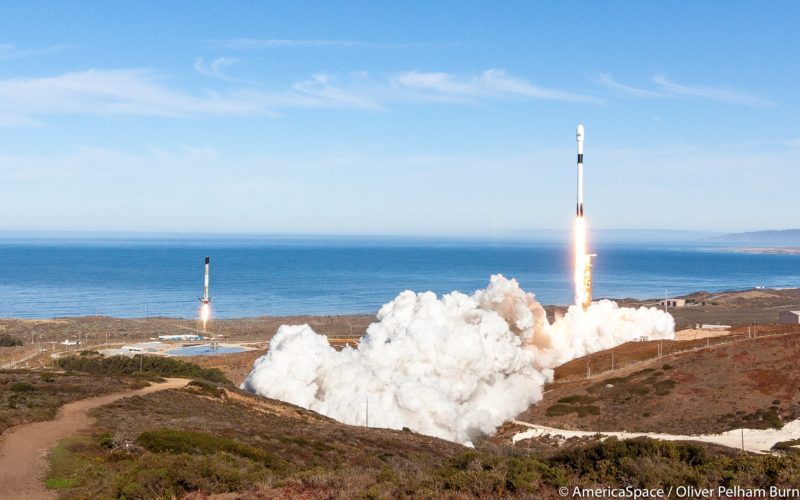
Only days before it is due to set out on an ambitious raft of missions for 2021, SpaceX has received a contract worth more than $150 million to fly a pair of launches in support of the Tranche Zero Transport and Tracking Layer program for the Space Development Agency (SDA). The missions, targeted to occur in September 2022 and March 2023, will originate from Vandenberg Air Force Base, returning a measure of regularity to operations out of the West Coast launch site.
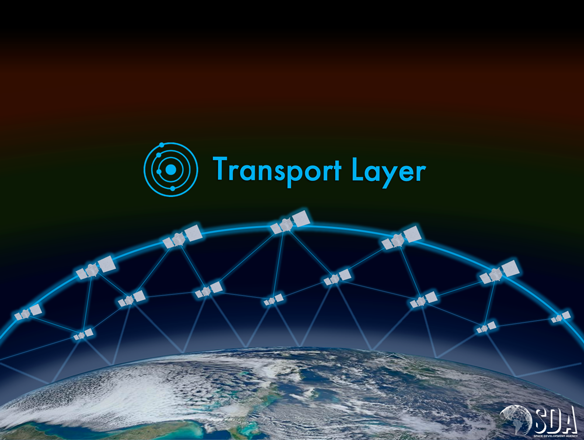
Since the inaugural voyage of its Falcon 9 v1.1, way back in September 2013, SpaceX has totaled 16 launches out of Vandenberg’s mountain-ringed Space Launch Complex (SLC)-4E.
And it has brought Falcon 9 first-stage booster cores safely back home on ten occasions, with seven pinpoint touchdowns on the deck of the Autonomous Spaceport Drone Ship (ASDS), “Just Read the Instructions”, between January 2017 and January 2019, and three returns to solid ground on Landing Zone (LZ)-4—the repurposed Space Launch Complex (SLC)-4W—since October 2018. The most recent ground-pad landing came just last November, when the first-time-flown B1063 core helped deliver the NASA-led Sentinel-6A Michael Freilich ocean-monitoring satellite to orbit.
Across that short bundle of years, Vandenberg has played host to eight “batches” of Iridium NEXT low-orbiting communications satellites, together with Spain’s Paz radar-imaging spy satellite, the SSO-A SmallSat Express, a trio of Earth-observation satellites—the joint NOAA/NASA Jason-3, Taiwan’s Formosat-5 and Argentina’s SAOCOM-1A—and Canada’s CASSIOPE science satellite and the multi-spacecraft Radarsat Constellation Mission (RCM). Four Falcon 9 cores have launched twice out of Vandenberg and record-holding frequent-flyers B1049 and B1051 (both of which have logged seven launches) flew one mission apiece out of the West Coast launch site.
And 2021 is certainly shaping up to be a busy time for Vandenberg, with as many as eight flights planned, notwithstanding the withdrawal of JRTI from California to Florida to support an increased tempo of East Coast missions from Pad 39A at the Kennedy Space Center (KSC) and Space Launch Complex (SLC)-40 at Cape Canaveral Space Force Station.
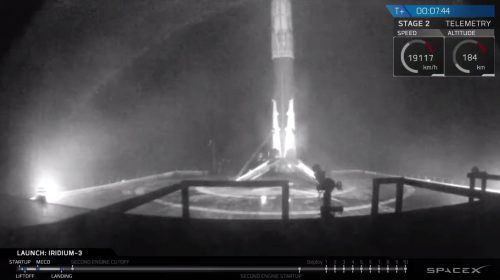
As well as Germany’s trio of SARah radar-imaging surveillance satellites—an “active-antenna” spacecraft set to fly in the spring and a pair of “passive-antenna” companions in the fall—Vandenberg’s 2021 manifest also includes a pair of SmallSat “rideshare” missions, two WorldView Legion missions for Westminster, Colo.-headquartered DigitalGlobe, NASA’s Double Asteroid Redirection Test (DART) mission in July and the highly secretive NROL-87 for the National Reconnaissance Office in December.
Into this mix of missions now enters SpaceX’s $150.45 million contract to launch two flights for the SDA, an independent defense agency under the umbrella of the Office of the Undersecretary of Defense for Research and Engineering.

The SDA came into being in March 2019 with an expectation that it would eventually form part of the U.S. Space Force and the intention to develop new military space assets more quickly than was previously possible through the Pentagon. Notably, these assets are characterized by the philosophy of “proliferated low-Earth orbit” (pLEO) operations, in which hundreds—and perhaps thousands—of small satellites are launched in “constellations”.
“A proliferated architecture of small satellites allows for resilience by providing capabilities that are not compromised by disruption or defeat of a small number of assets,” the SDA has previously noted. “By employing such design principles as mesh networks, the National Defense Space Architecture (NDSA) is built to continue functioning in the event that individual nodes become unavailable. The satellites that comprise the NDSA are also smaller, cheaper and quicker to deliver and replace than some of our exquisite defense space assets deployed in limited quantities.”
One such pLEO constellation is the Transport and Tracking Layer, which will take the form of a flotilla of experimental military satellites to provide a backbone for the NDSA and furnish warfighters on the ground with “assured, resilient, low-latency military data and connectivity worldwide”.
According to the SDA, the Transport and Tracking Layer is “envisioned, modeled and architected” as a mesh-like network of 300-500 satellites, situated in low-Earth orbit at altitudes ranging from 460 miles (750 km) to 750 miles (1,200 km). SDA explained that LEO offers less expensive orbit-insertion needs, better viewing geometries for space-based Earth observations and lower latencies and power requirements for communications transmissions to terrestrial systems.
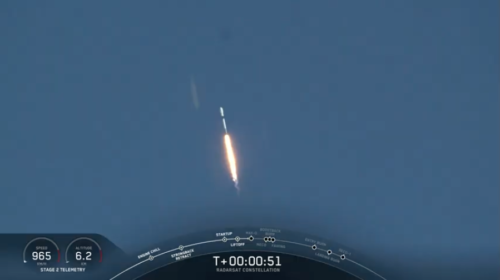
With a full Transport Layer constellation in place over the coming years, this could see 95 percent of all locations on Planet Earth with at least two satellites in view and 99 percent with at least one satellite in view, thereby ensuring constant global coverage and holistic situational awareness for U.S. and allied military personnel.
Last August, the SDA awarded Lockheed Martin and York Space Systems contracts worth a combined $291.5 million to design, fabricate and deliver an inaugural batch of 20 satellites for the initial “Tranche Zero” incarnation of the Transport Layer. “The first step toward building an interoperable, connected secure mesh network, it will help enable Joint All-Domain Operations, allowing warfighters to stay ahead of emerging threats,” Lockheed Martin noted at the time of the contract award. “By linking nodes together, seamless connectivity is created between all domains, much like today’s smartphones.”
Although these first-generation members of the Transport Layer will feature a relatively limited networked capability, future enhancements—via the upgraded Tranche One, Two, Three and Four incarnations, due to come online every two years from 2024 through 2030—are expected to gradually ramp up the technological functionality. Specifically, Tranche Zero will seek to demonstrate the feasibility of the proliferated architecture in terms of cost, schedule and scalability.
Tranche One (for which a request for information was issued to industry last November) is described as “regional persistence for tactical data links, advanced missile detection and Beyond Line Of Sight (BLOS) targeting”, with Tranche Two moving from regional towards “global persistence”. More advanced improvements would characterize Tranches Three and Four, including better sensitivity for missile tracking, better BLOS targeting, better Positioning, Navigation and Timing (PNT) capabilities and better laser communications.
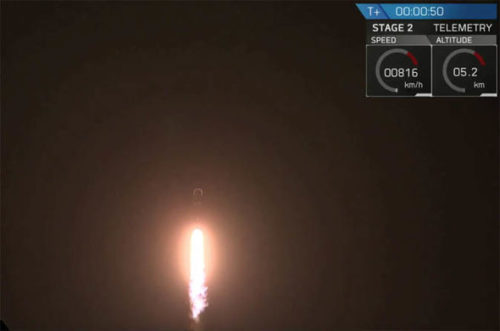
Later tranches will significantly increase the provision of secure high-bandwidth and low-latency data links across larger satellite fleets and integrate them with the Link-16 military communications system and Integrated Broadcast System (IBS).
According to Lockheed Martin, these capabilities will allow connectivity with systems aboard fighter aircraft such as the F-16 Fighting Falcon, F-22 Raptor and F-35 Lightning II, missile defense systems including Terminal High Altitude Area Defense (THAAD) and weapons systems and Integrated Air and Missile Defense (IAMD) networks. They are also expected to permit “sensor-to-shooter” targeting for tactical land and sea-based warfighters.
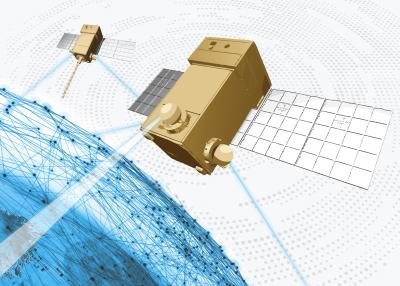
Under the terms of their respective contracts, Lockheed Martin and York Space Systems are each building ten Tranche Zero satellites. Seven are identified as “A-Class” and possess at least four optical cross-links to enable them to communicate with other satellites either in-plane or in totally different orbits. Three other “B-Class” satellites will connect directly to warfighters via Link-16 and possess two optical cross-links to maintain constant communications with other in-plane spacecraft.
The selection of SpaceX to launch two Tranche Zero missions comes after the Launch Request for Proposal issued last October, with responses due on 9 November. It is understood that SpaceX “will provide standalone launch services via two launches”, the first of which will take place “in September 2022” and “the entire constellation on-orbit no later than 31 March 2023”.
.
FOLLOW AmericaSpace on Facebook and Twitter!
.
.






you just never get tired of watching this next step of man probing into the future with all these new systems they are trying and doing it very well indeed